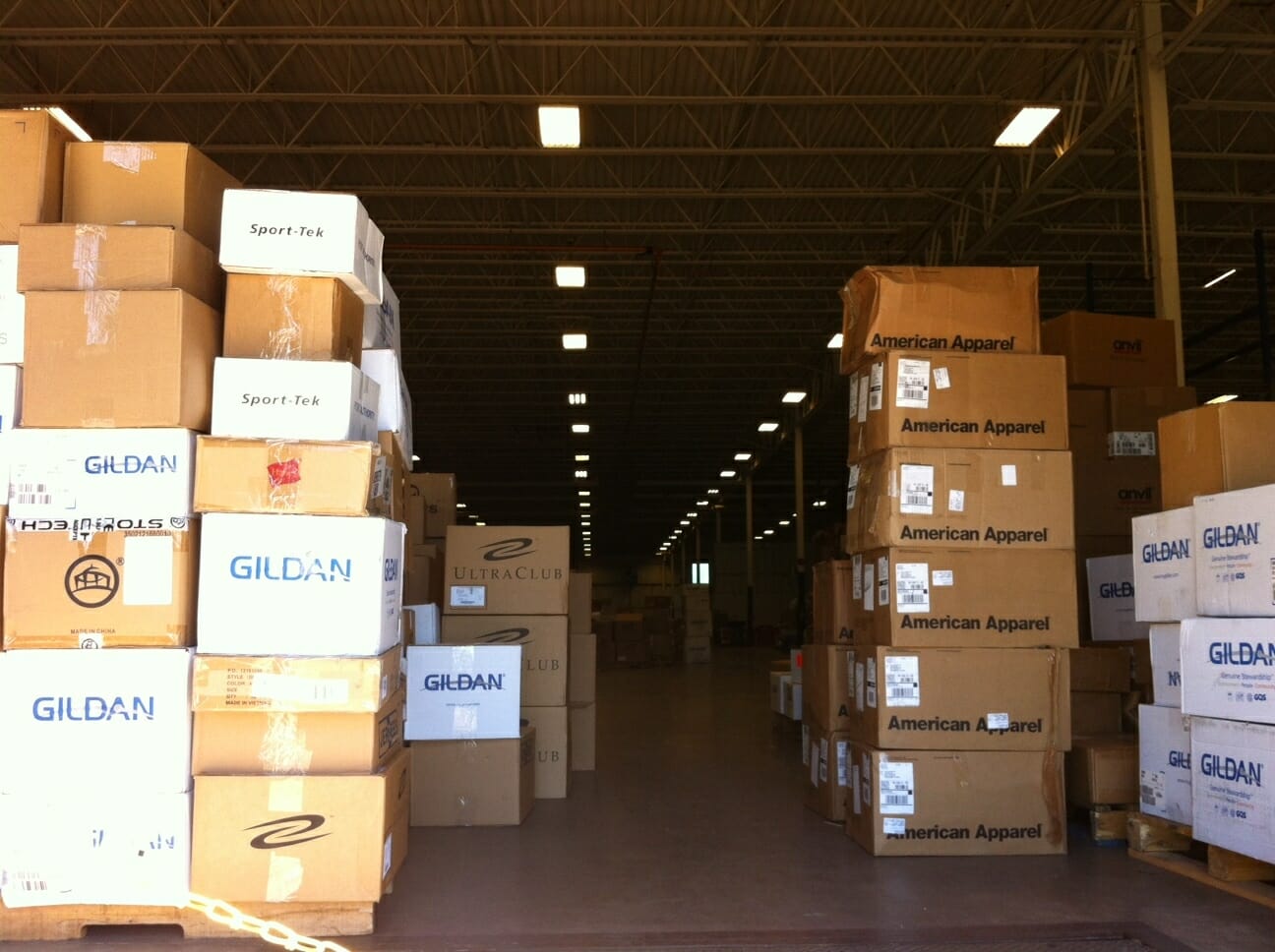Maybe it’s because that we try to deliver exceptional customer service daily that I get so frustrated and annoyed with other companies that fail to deliver even a shallow degree of customer service. Worse, are companies who think that they are a great customer service led firm, but in reality they fail with their interactions.
Below are two examples of actual customer service I have experienced recently. These are professionals, doing their jobs, and are completely on opposite ends of the customer service spectrum. I’m pointing these out so others can learn from them, but also because blog venting feels so good. Ahhhhh.
The Tightest Ship?
First, let’s discuss UPS. “The tightest ship in the shipping business” is what they claim to be. True? Let’s peel back that facade and find out.
Every single day we receive hundreds of boxes via UPS. Most people might have received a package or two…or on a busy day an entire hand-truck worth. Our daily delivery is usually the majority of one of their trucks, but on occasions we can receive that truck and a good bit of another. When Eddie, our normal route driver, leaves we are sorting and wading through somewhere between two hundred and five hundred boxes. Every. Single. Day. Our crack receiving team sorts, opens and counts each box the day it comes in and checks it in against orders in the system for accuracy. They also receive stuff from FedEx, LTL shipments, and occasionally semi-truck trailer loads of stuff too. It is a monumental sisyphean task, and we kick ass doing it.
A few weeks ago a customer sent us three boxes of trendy beach hoodies to decorate that they ordered from a distributor. Of the three, we received only two. Our problem is that when Eddie is finishing regurgitating that wave of boxes for the delivery, we sign for everything on our dock. It takes hours to go through it all. We knew we should have had three boxes for this order delivered, as the boxes were correctly marked 1 of 3, and 2 of 3. Tracking the shipment confirmed that there were three boxes shipped for this order. The one box that’s missing contained 50 hoodies and is worth about $350.
So, we do what anyone would do and report the challenge to both our client and UPS. Our client is completely understanding and appreciative of the situation. UPS, not so much. “Well, you signed for it” is what we are initially told by their customer service rep on the phone. Thanks UPS!
In the day of instant information search and customer databases, not understanding your customer and using any active listening skills towards the problem is a huge sin. “Well, you signed for it” is the verbal equivalent of a punch in the eye. Thanks.
Only after kicking the problem upstairs and making a big stink, did we get in contact with a customer service representative high enough in the food chain to start an investigation into the matter.
When I was discussing the problem with the senior rep, I mentioned that our company operates a little differently than most normal UPS stops, but we aren’t entirely unique. There probably are other companies around the globe that get hundreds of packages a day from UPS. They know that they don’t do everything perfectly, as much as they don’t want to admit it.
I politely asked that if they wanted to stick with the “Well, you signed for it” statement as policy, maybe we should just have their driver wait while we go through every box on the delivery to make sure they are all there. Would Eddie mind if he hangs around until mid-afternoon while we make sure everything is accounted for with the delivery? “Um…”
The problem with UPS customer service is that it is geared toward their viewpoint, not the customers. There isn’t any empathy. At all. Their business is all statistics and numbers. What’s in the box, or the purpose of the shipment doesn’t matter as much as the dimensions of the box, how much it weighs, the final destination, and when it has to be there.
For our customers though, what’s in the box is extremely important. For us, these are blank goods for a customer that we have to decorate and ship within a specified window. Since these blanks were lost, we repurchased them and still made the order happen on time. Working it out with UPS over the challenge didn’t stop the order from being produced as we see customer service differently. Just another speedbump in our day really.
A good punchline to this scenario is a few days after this challenge landed in our lap we received a misdelivered box ourselves. Not our box. Not our address. We signed for that one too. UPS did pick that up later that day and sent it on it’s merry way.
By the way, the third box did show up ten days later. Somehow it wound up in Lenexa Kansas on it’s way to Milwaukee. By then, we didn’t need the shirts as we had already brought in what we needed to complete the order, decorated it, and shipped it to the customer. We were able to shoot it back to the distributor and get credit for the hoodies we had to order.
Pump It Up
Now, let’s discuss the other side of the coin. We have an automatic screen washer from Grunig, which is a Swiss company, that is distributed in the United States by Kiwo. This device is great, as it is basically a big car wash for screens. Put one in on one end, and it comes out clean on the other. One guy can clean 200-250 screens a shift easily. It’s by far one of the best things a busy shop can have as reclaiming screens is one of the worst jobs you can have. It’s like doing the dishes forever.
Towards the end of the first shift, the air-driven pump that circulates the product in the machine seized up. A phone call to the service technician at Kiwo produced a hypothesis of what could have happened, but since they had some people in the general vicinity they arranged for a repair technician to review the challenge the following morning.
Bright and early, their technician Gerhard quickly disassembled the pump and located the issue. Accompanying Gerhard was the industry legend Geoff McCue. He immediately got on the phone and found a local pump supply company that did in-house repairs. They had the parts in stock to repair the pump and could handle the repair.
An interesting point is that both Gerhard and Geoff drove up from another city to help us out. They couldn’t stay because they had to catch a plane, but they made time to help their customer out and personally solve a big challenge.
Armed with an address and a box that contained the pump, I drove over to Anderson Pump in Brookfield, which was about thirty minutes away. I was greeted and the repair manager, Jay Mathson, came out and escorted me to the repair area. After describing the pump and the situation, I left the pump with their technician and made myself comfortable in their company breakroom.
About forty-five minutes later, the pump was fixed and thoroughly tested. Despite being a very, very busy repair shop they squeezed me in immediately. No rush fees or any extra charges. Extremely competent, professional and skilled people work at Anderson Pump, but what was is distinctive is that they listened to Geoff and me regarding our circumstances. We had our screen-reclaiming machine up and running by lunch.
Our need was real, as getting your screen room workflow backed up because you don’t have clean screens to use is a nightmare. No haggling. No drama. No “Well, you signed for it” bullshit. Just smiles.
Why can’t more companies operate with this viewpoint?




7 comments
Chuck Johnston
Here’s another nightmare scenario. The UPS driver comes by for his daily pick-up, doesn’t scan any boxes and loads boxes that don’t have any labels on them yet and aren’t even going out via UPS. Try tracking those down at the UPS distribution center. It’s happened more than a few times.
David Anderson
I’m having a staff meeting today wherein we’ll talk about how everyone’s job is customer service. That includes our staff who may never set eyes on a customer or speak to them on the phone. If you’re catching shirts at the end of the dryer, your job isn’t counting shirts accurately and putting them in well-labelled boxes (two critical tasks you must still do well), your job is making customers happy. For the catcher this means thinking about the impact of his/her role on the customer experience – if I cram these overflowing into the smallest possible box, will my customer feel great about receiving that? If my customer gets a box that says 72 Med shirts but it’s really got 100 smalls, is that going to make the customer happy? On the other hand, if the customer opens a well-labelled box that’s packed well, and the first thing they see is a well-folded product that shows off their brand – pow! That’s happiness. In short, everyone on staff is a customer service representative.
atkinsontshirt
Excellent point David! Thanks for reading and commenting!! Awesome!! -M
Aubrey Collins
“No haggling. No drama. No ‘Well, you signed for it’ bullshit. Just smiles.
Why can’t more companies operate with this viewpoint?”
^^This! Great post, Marshsll!
atkinsontshirt
Thanks Aubrey!
J
Oddly, sometimes I feel we are less profitable because of our customer service. I cannot believe the stuff other local shops get away with. Attitudes, poor workmanship, unprofessional business practices, and yet they seem to kill it with sales. Our small team and small shop go the extra mile, but it takes a ton of time to offer that service and although we have happy customers, we don’t see the volume the other local shops get in some cases. Our marketing is on point along with our SEO too.
Oh well, we’d rather be the great with our customers than rich I guess.
Richard Greaves
Great stories. Service is always from a person, never the company. We love Eddie or my UPS driver Jay, but we often have to fight to find people in a company to help us. That’s why customers start asking for help with a buildup of reasons why you should help them. When you hear that, you know you’re speaking to a past victim of indifference and it’s your chance to excell.